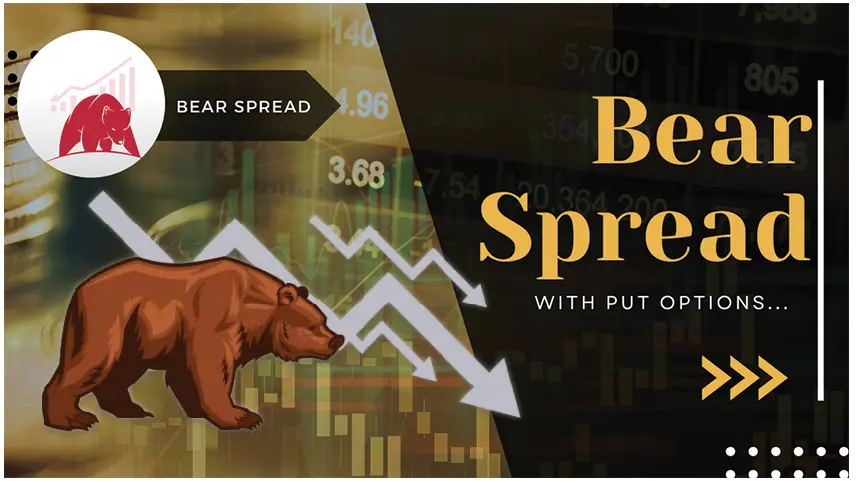Bear Spread with Put Options
A bear spread with put options is a type of options trading strategy that profits from a decline in the price of the underlying asset. In this strategy, an investor will purchase a put option with a lower strike price and sell another put option with a higher strike price. The goal is for the price of the underlying asset to fall, causing the price of the lower strike put option to increase, while the price of the higher strike put option decreases, resulting in a net gain for the investor. This strategy is considered a bearish one because it profits from a declining market.

The goal of the bear spread is to profit from a decline in the underlying stock price. By selling a put option with a lower strike price and buying a put option with a higher strike price, the trader is able to limit the maximum potential loss while potentially increasing the potential profit. This strategy is called a "bear spread" because it profits from a downward movement or "bearish" trend in the underlying stock price.
How it’s used?
A bear spread with put options is used as a way to profit from a decline in the price of the underlying asset. The strategy involves buying a lower strike price put option and selling a higher strike price put option. When the price of the underlying asset decreases, the value of the purchased put option will increase while the value of the sold put option will decrease.
The maximum profit is achieved when the price of the underlying asset falls to the strike price of the sold put option, at which point both options expire worthless and the trader realizes the difference between the two strikes as profit. The maximum loss occurs when the price of the underlying asset increases to the strike price of the purchased put option, at which point the trader will lose the premium paid for the purchased put option.
This strategy is often used by traders who have a bearish outlook on the market and want to profit from a decline in prices while limiting their potential losses. Bear spreads can be adjusted or closed out early to manage risk, depending on the current market conditions.
Risk
A bear spread using put options carries some risk, as with any options trading strategy. The following are the main risks associated with this strategy:
• Market risk: The price of the underlying asset may move in the opposite direction of the trader's expectation, resulting in a loss.
• Time decay risk: As options get closer to expiration, their value decreases, which is known as time decay. If the price of the underlying asset doesn't move in the desired direction, the options may expire worthless, resulting in a loss.
• Volatility risk: Changes in market volatility can impact the value of the options, potentially causing the trade to move against the trader's expectation.
• Limited profit potential: The maximum profit is limited to the difference between the strike prices of the two options, minus the cost of the trade.
• Unlimited loss potential: The maximum loss is limited only by the value of the underlying asset, which can be much higher than the maximum profit potential.
Traders should carefully consider these risks and have a well-defined plan for managing their positions, including adjusting or closing out their positions if necessary. They should also have a solid understanding of options trading and the underlying asset before entering into a bear spread with put options.

0 comments